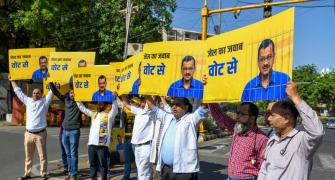What do new CEOs Jonathan Schwartz of Sun Microsystems and Ephren Taylor of City Capital have in common? Any newly appointed CEO or general manager faces two immediate challenges the first day on the job.
The first is diagnosing the state of the business he or she is taking over, paying particular attention to where the critical problems and performance issues lie.
The second is assessing the people who have been running things up to that point. It isn't simply a matter of separating high performers from underachievers, although that is obviously important. It's primarily a matter of testing the knowledge and capabilities of the organization as a whole so that the new CEO can draw on its strengths and fix its weaknesses.
- Slideshow: Ten questions new CEOs should ask their executives
- Slideshow: Ten tips for Indian CEOs going west
Those are two difficult chores, but some CEOs have developed tools to help them accomplish both objectives simultaneously. Consider the case of Morgan Crucible, a large, 150-year-old manufacturer of specialty ceramics, carbon and other industrial materials, based in the UK.
In late 2002, Morgan was in serious trouble: Debt was high, the share price low, cash scarce. Even the pension-fund liabilities were three times the company's market capitalisation. The board brought in a new leader, Warren Knowlton, to engineer a turnaround, and over the next three years, Knowlton did just that. Today, the company is once more healthy. It has no debt, a secure pension fund, operating margins three times as great as they were before, and a share price nearly 10 times higher.
But it was Knowlton's first step that laid the groundwork for what followed. Just before Christmas 2002--before he had officially taken over--he circulated a list of 30 questions to the heads of Morgan's nine global business units. The "homework," as he calls it, was a comprehensive survey of the state of each business. The questions ranged far and wide.
The most important may have been, "How many business segments do you have, and what is the strategic position of each one measured by its market share relative to competitors?" But there were plenty more. "What is the ratio of fixed and variable costs?" "How would you describe the balance-sheet intensity of your business?"
- Slideshow: Worst CEO moments
- Slideshow: Six ways CEOs hide their pay
Each heading contained numerous sub-questions, to the point where the business leaders could probably have written 30 lengthy essays in response. Knowlton wanted detailed answers, but he also wanted each executive to prepare a 15-minute presentation summarizing the situation.
The results, as they say, spoke volumes. One question, for instance, focused on the business's relative power in the supply chain, thus indicating whether the unit was supplying commodities or more highly differentiated products. "That enabled me to make a judgment about most of our businesses within weeks," says Knowlton, who promptly sold off four of the company's units.
A series of questions about research and development suggested to Knowlton that Morgan's centralized R&D facility was too highly focused on basic research and too far removed from the practical needs of customers. Knowlton disbanded the centralized unit, put the scientists and engineers back into the businesses and gave the business heads responsibility for overseeing R&D.
Where did the idea of 30 questions come from? "They are the questions I ask myself about any business," says Knowlton, who pounded out the first draft of his lengthy survey on a single plane ride. To be sure, the survey was only one instrument in Knowlton's toolkit, as it would be for any general manager.
Newly appointed leaders must follow up with a deeper diagnosis of the company's full performance potential, which will help them set targets for the next couple of years. But a quick initial capability assessment like Knowlton's questions can give them a big head start on the two challenges that face them the minute they walk in the door.
- Slideshow: Biggest CEO paychecks







